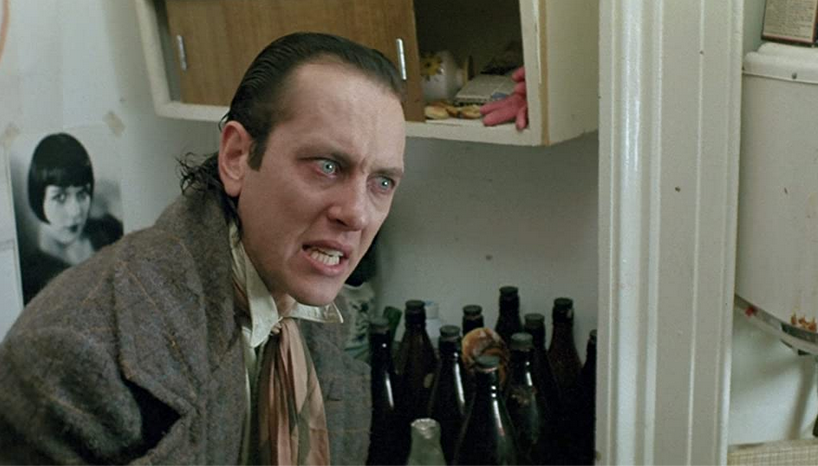Withnail and I (dir. Bruce Robinson, 1987)- Review
Download Withnail and I screenplay here for personal, private use.
"The film is bittersweet, sweet and sour, like King Curtis’s definitive sax version of A Whiter Shade of Pale,” said Bruce Robinson of his 1987 cult classic Withnail and I. “The comedy comes from character and situations. There are no jokes. No poncing.”
Debate continues to simmer around Withnail’s legacy, with audiences split between those who view it as a self-aggrandising, pretentious, plotless morality sermon, and those who pack quote-a-long screenings at the Prince Charles, make inebriated pilgrimages through filming locations in the Lake District, and punish their bodies with the Withnail drinking game. Yet with every passing decade, and each new crop of eighteen-year-olds that forms a spiritual bond with its inimitable depiction of substance abuse, the unlikely tale of two unemployed, alcoholic actors and a lecherous, corpulent uncle sinks further into the national consciousness.
Nostalgia has always been a fundamental part of the film: set, in the words of Danny the drug dealer, “91 days away from the end of the 1960s, the greatest decade in human history”, and loosely based on Robinson’s experiences of the period, it follows two actors (based on Robinson and his friend Vivian MacKerrell) attempting to find a respite from the “hideousness” of Camden. Richard E Grant, who played Withnail, remembered in his memoirs that “Robinson wrote the script in 1970… but it wasn’t until his Oscar nomination for writing The Killing Fields that he could get the finances and build in the proviso that he would direct it”. Grant also quotes Bruce as “declaring that he ‘was as gorgeous-looking as a fucking Renaissance prince’ when he left drama school and various gents ‘wanted my arse’”; these experiences, particularly overtures from Franco Zeffirelli, inspired the character of Monty (Richard Griffiths), Withnail’s wealthy, melodramatic thespian uncle.
Withnail and ‘I’ - never named in the film but identified as ‘Marwood’ by a shot of a telegram - share a squalid Camden flat, a bohemian dystopia: the flat represents the lapsed utopia of the dying ‘60s, with the free love and communal idealism of the decade overrun by decay and grime. The kitchen is invaded by unknown, living “matter” in the sink; drug dealers sleep, Goldilocks-like, in the beds; saveloys are wielded in the bathtub. A parallel lost utopia is depicted in the Lake District cottage, owned by Withnail’s wealthy homosexual Uncle Monty, in which the two actors try to escape the horrors of urban London, framed by wrecking balls and wailing Jimi Hendrix solos.
But the unnelectrified, crumbling, poacher-stalked country home represents the decaying nostalgia around another social formation, the dandyish, Waughvian Oxbridge mode of which Monty is a pathetic remnant. The middle-class Marwood is smuggled into this milieu by Withnail’s improvised claim that “he went to ‘the other place,’”, since the house is “free to those who can afford it, very expensive to those who can’t.” The bygone circle of transgressive Oxbridge dandies, of which Monty is a pathetic echo, parallels the 1960s Chelsea mix of bohemian society elements and London low-life- in which Withnail seems doomed to follow his uncle’s path.
Withnail and I struggles under a sense of countercultural defeat, demonstrated by the main characters’ reactions to social change. Marwood - like his real life counterpart, the director - escapes the squalor of the collapsed, decaying social formations represented by upper class bohemians Withnail and Monty; just as Robinson found the mainstream success and career stability that allowed him to make Withnail and I in the first place, Marwood leaves the decadent hedonism of a byegone era behind, and moves into a new stage of his life and career. A tinge of Robinson’s distaste for his own Withnail period may be felt in his scene-setting in the pub his characters frequent:
“Only two women in here and they look like men. Faces like rotten beetroots… everybody here has one thing in common. They have come in here to get drunk. It’s a horrible place. Shit-coloured formica. Carpet like the surface of a road. The atmosphere is rank with smoke and Irish accent”.
Yet the film avoids endorsing Marwood’s path by leaving the end of the film to Withnail, with his famous performance of a Hamlet monologue to caged wolves at Regents Park Zoo. For all his failures - as an actor, and as an individual unable to move past a byegone era - Withnail has remained a weirdly intriguing, witty and touching point of reference for generations of young, reckless viewers, even as they age out of relating to him. As Grant put it: “all Withnail’s outrage at the world he wants to put to rights, plus a Yorkshire pit’s worth of self-hatred, make for a dented sense of humour.”
Áine Kennedy is a London-based writer and manager of the ScriptUp blog.






